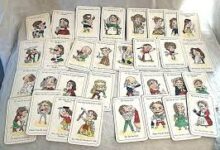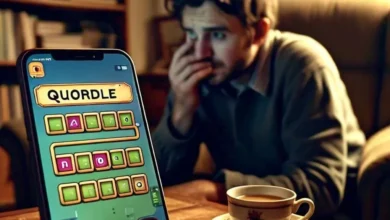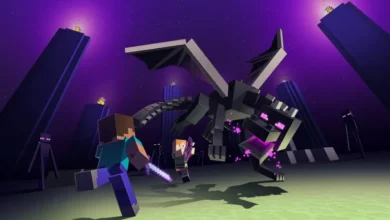Minecraft (2009) game icons banners Through the Years: Iconic Symbols That Defined a Decade of Gaming

Introduction to minecraft (2009) game icons banners and the Impact of Gaming in the Past Decade
In the ever-evolving landscape of video games, few titles have left as indelible a mark as minecraft (2009) game icons banners. Since its inception in 2009, this blocky world has transformed not just how we play but also how we interact with digital environments. Iconic game icons and banners have become symbols of creativity, adventure, and community—reflecting a decade’s worth of gaming evolution.
As players venture into pixelated realms filled with endless possibilities, they encounter visual representations that tell stories far beyond mere graphics. Each icon is steeped in nostalgia and layered meaning, resonating deeply within the hearts of millions. Join us on a journey through time to explore these iconic symbols that shaped our experiences in minecraft (2009) game icons banners and influenced an entire generation!
The Evolution of minecraft (2009) game icons banners
minecraft (2009) game icons banners, introducing a simple blocky aesthetic. The early icons reflected minimalism, focusing on the iconic grass block and Steve’s pixelated face. This straightforward design resonated with players who appreciated its simplicity.
As years passed, the game evolved significantly. Banners emerged as customizable symbols in 2016, allowing players to express their creativity further. Each banner showcased vibrant colors and intricate designs that transformed minecraft (2009) game icons banners visual language.
The shift from basic icons to elaborate banners marked a turning point for player engagement. These graphics became more than mere identifiers; they represented individuality within the vast sandbox world.
By minecraft (2009) game icons banners had embraced a broader palette of themes and motifs. Icons now included creatures like creepers or endermen alongside tools and resources integral to gameplay dynamics. Each symbol encapsulated not just mechanics but also stories shared by millions of users around the globe.
Analysis of the Changes in Design and Meaning minecraft (2009) game icons banners
The evolution of minecraft (2009) game icons bannersreflects the growth of both the game and its community. Early designs were simple, often relying on pixelated graphics that echoed gaming’s retro roots. These early symbols represented raw creativity, inviting players to mold their worlds.
As time progressed, complexity increased. New elements emerged: vibrant colors and intricate patterns began to dominate the visual landscape. Each icon carried distinct meanings—representing biomes, mobs, or gameplay mechanics—creating a deeper connection for players.
With updates came fresh content and reimagined visuals. The shift from basic shapes to more dynamic representations mirrored advancements in technology and player expectations. Icons became not just symbols but narratives in themselves, encapsulating experiences within the blocky universe.
This design journey illustrates how visual language evolves with culture—a testament to minecraft (2009) game icons banners ability to adapt while remaining true to its foundational spirit. Each change invited discussion among fans and fostered a sense of belonging within the ever-expanding community.
Nostalgic Memories: How These Icons Shaped Players’ Experiences
For many players, minecraft (2009) game icons banners is more than just a game; it’s a time capsule of memories. The simple blocky icons transport us back to the days spent crafting our first shelter or mining for diamonds deep underground.
Each icon carries its own story. The familiar grass block reminds some of their initial adventures in survival mode, while others might recall epic multiplayer battles marked by the iconic creeper face.
These symbols have fostered connections too. Players share experiences and tips through them, creating a sense of community that transcends borders. They evoke laughter over failed attempts at building grandiose structures or fondness for late-night sessions with friends.
As we reflect on those early years, it’s clear these icons shaped not only gameplay but friendships and creativity as well—forever etched in our gaming history.
Influences on Other Games and Pop Culture
minecraft (2009) game icons banners have transcended their digital origins. They’ve become symbols recognized beyond the gaming community, influencing everything from merchandise to fashion.
The blocky aesthetic has inspired countless titles in the indie scene. Games like Stardew Valley and Terraria borrow elements of its sandbox style. Players find joy in crafting and exploration, a hallmark that minecraft (2009) game icons banners popularized.
In pop culture, these icons have seeped into television shows and movies. References abound in media aimed at younger audiences, often showcasing characters engaged in building or mining activities reminiscent of minecraft (2009) game icons bannersgameplay.
Artists now incorporate pixelated designs into their work. This trend reflects how deeply ingrained these game symbols are within contemporary creative expressions.
Even educational tools leverage the game’s design philosophy. Programs teaching coding or teamwork skills utilize familiar visual styles to engage students effectively. The ripple effect is vast and continues to grow.
What’s Next for Minecraft? Predictions for Future Iconic Symbols
As Minecraft continues to evolve, the potential for new game icons and banners is immense. The community thrives on creativity. This paves the way for fresh symbols that resonate with players.
We might see icons inspired by emerging technologies like virtual reality or augmented reality. Imagine a banner that changes based on location in real-time!
The integration of more diverse cultures could also lead to unique designs. Symbols representing various global elements would enrich player experiences and foster inclusivity.
New gameplay mechanics will likely inspire iconography too. Features such as enhanced crafting systems or biomes can introduce innovative visuals that capture players’ imaginations.
And let’s not forget collaborations with popular franchises! Crossovers could bring entirely new aesthetics into the Minecraft universe, creating memorable symbols that appeal to wider audiences. Exciting times lie ahead in this pixelated world!
Conclusion: The Enduring Legacy minecraft (2009) game icons banners
The journey of minecraft (2009) game icons banners reflects more than just the evolution of graphic design. It showcases a blend of creativity, community engagement, and technological advancements that have shaped a generation. From blocky beginnings to intricate designs, each icon tells a story about the players who embraced them.
As these symbols became intertwined with gaming culture, they influenced not only other games but also made their mark on broader pop culture. The familiar images resonate with nostalgia for many long-time gamers while continuing to capture the imaginations of new players.
Looking ahead, minecraft (2009) game icons banners ability to adapt ensures that its legacy will remain vibrant. Future icons are likely to build on this rich history while inviting fresh interpretations and experiences.
The lasting impact of minecraft (2009) game icons banners is undeniable—each one holds memories and connects players across time and space in a world built on imagination.





